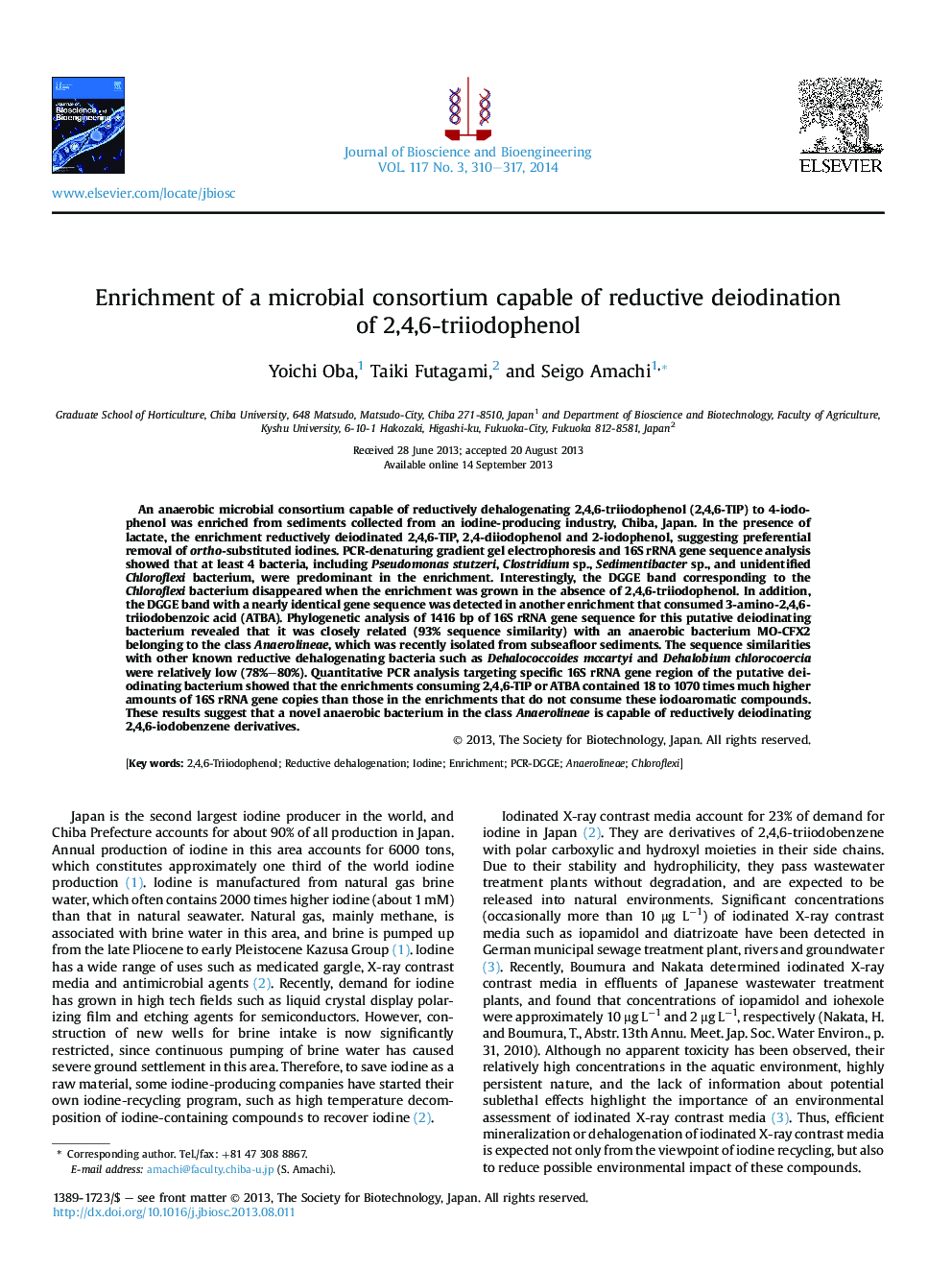| کد مقاله | کد نشریه | سال انتشار | مقاله انگلیسی | نسخه تمام متن |
|---|---|---|---|---|
| 20597 | 43182 | 2014 | 8 صفحه PDF | دانلود رایگان |
An anaerobic microbial consortium capable of reductively dehalogenating 2,4,6-triiodophenol (2,4,6-TIP) to 4-iodophenol was enriched from sediments collected from an iodine-producing industry, Chiba, Japan. In the presence of lactate, the enrichment reductively deiodinated 2,4,6-TIP, 2,4-diiodophenol and 2-iodophenol, suggesting preferential removal of ortho-substituted iodines. PCR-denaturing gradient gel electrophoresis and 16S rRNA gene sequence analysis showed that at least 4 bacteria, including Pseudomonas stutzeri, Clostridium sp., Sedimentibacter sp., and unidentified Chloroflexi bacterium, were predominant in the enrichment. Interestingly, the DGGE band corresponding to the Chloroflexi bacterium disappeared when the enrichment was grown in the absence of 2,4,6-triiodophenol. In addition, the DGGE band with a nearly identical gene sequence was detected in another enrichment that consumed 3-amino-2,4,6-triiodobenzoic acid (ATBA). Phylogenetic analysis of 1416 bp of 16S rRNA gene sequence for this putative deiodinating bacterium revealed that it was closely related (93% sequence similarity) with an anaerobic bacterium MO-CFX2 belonging to the class Anaerolineae, which was recently isolated from subseafloor sediments. The sequence similarities with other known reductive dehalogenating bacteria such as Dehalococcoides mccartyi and Dehalobium chlorocoercia were relatively low (78%–80%). Quantitative PCR analysis targeting specific 16S rRNA gene region of the putative deiodinating bacterium showed that the enrichments consuming 2,4,6-TIP or ATBA contained 18 to 1070 times much higher amounts of 16S rRNA gene copies than those in the enrichments that do not consume these iodoaromatic compounds. These results suggest that a novel anaerobic bacterium in the class Anaerolineae is capable of reductively deiodinating 2,4,6-iodobenzene derivatives.
Journal: Journal of Bioscience and Bioengineering - Volume 117, Issue 3, March 2014, Pages 310–317
